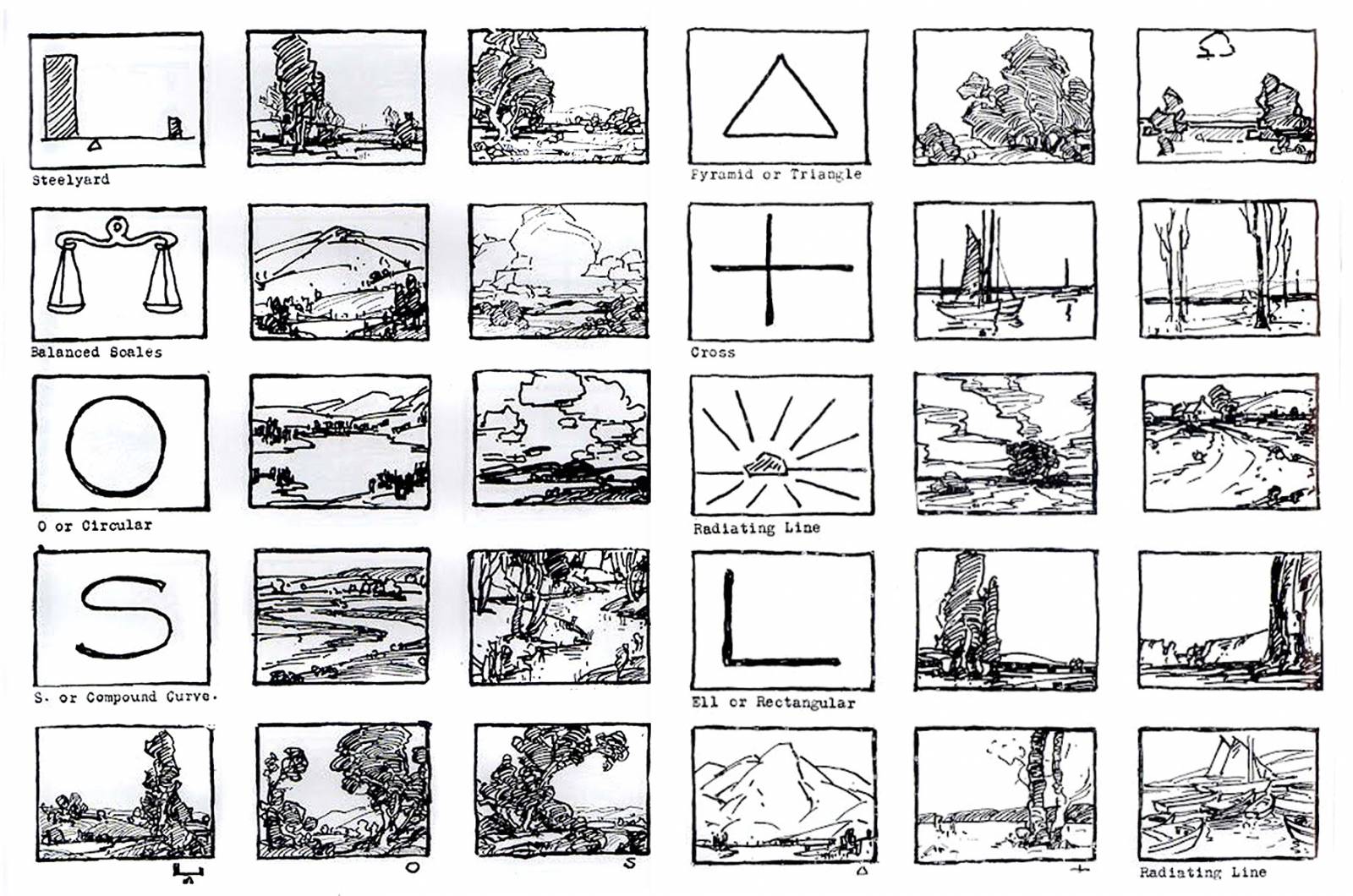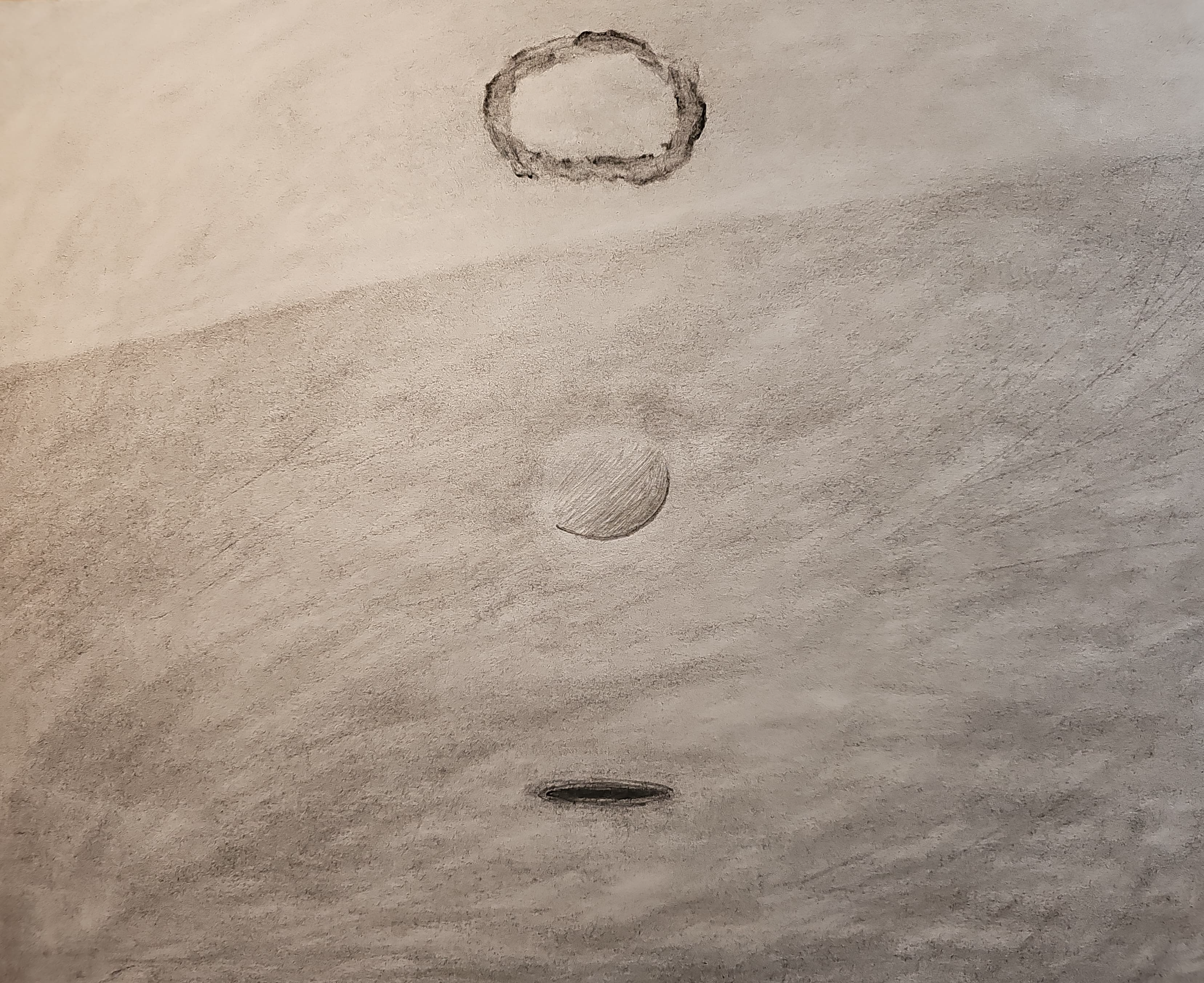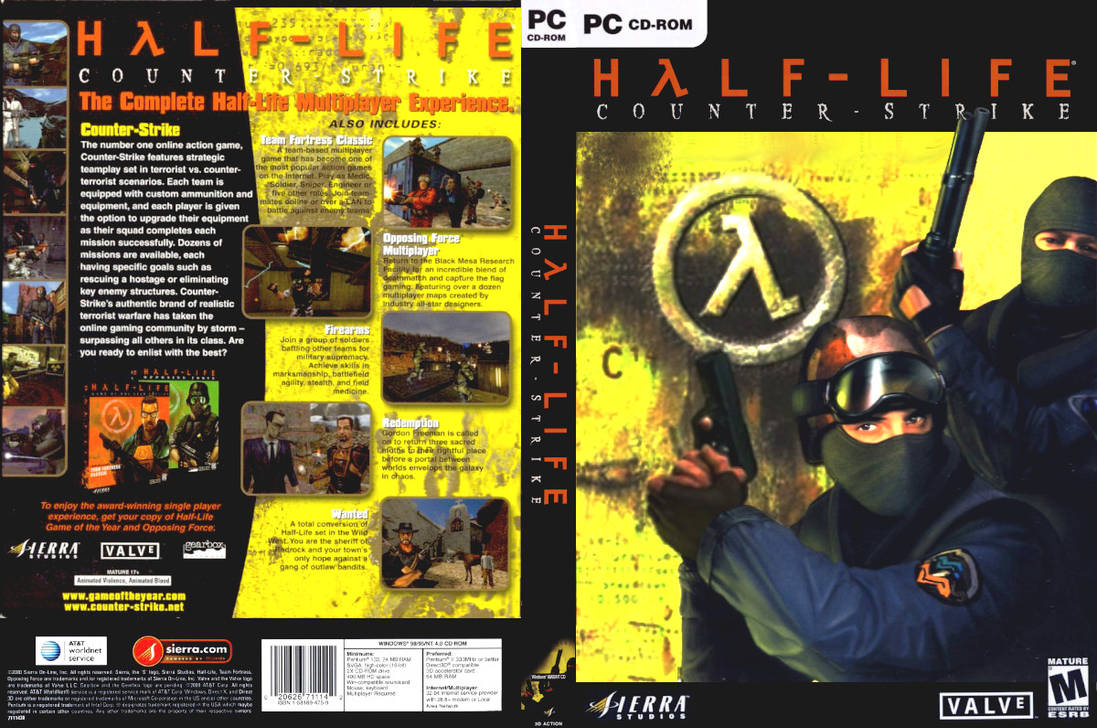Having Your Player Over for Dinner: Composition and Emergence in Video Games

Introduction:
Using terminology that I’m fond of (art, food, and dad jokes), I will show you why we should think about a game as an art composition, not as a computer program. We will learn how to plan for emergence in a game through the exploration of composition. We’ll also see why we should think of our player as a guest to an experience we’re planning, such as a dinner date, rather than considering them a passive audience.
What is Composition?
In art practices, there is a term called composition. Composition refers to how the elements of an art piece are structured and organized, whether it be a drawing, painting, music, film, or game.

The 15 Types of Composition, Originally Conceptualized by Edgar Payne in "Composition of Outdoor Painting". Image and article found here.
Composition Applied to Game Production
Like a painting, we must guide our viewers’ eyes subconsciously so that they see it through the story lens we’ve crafted. You can’t (or shouldn’t) literally write numbers of a painting in a sequence to be followed, so there are other ways to guide their view, like anticipating visual path or highlighting certain areas. The reason for this is so that the viewer doesn’t get “lost” in the painting, where they lose focus of what you intended with the piece. The result would be a painting that doesn’t feel alive because everything is homogenized as one, rather than contrasting between subject and background/non-subject.
Below are two drawings I made to illustrate this point. Also, check out the image about the 15 composition types, where the patterns show how the eye is guided through the picture.
Unfocused
The first drawing feels dull and lifeless (a bit critical of my own artwork, apparently), with no true focus for the eye to tie focus to. The drawing has organization but it’s not clear enough to be effective.
Focused
The second drawing differs from the first by only a few marks (less than 5% of the picture), but the result is a greater sense of focus and cohesion to the piece. The drawing remains abstract and now there is something more grounded for the viewer to grasp on to.
We'll see that this analogy holds true for video games, as well. The player will become increasingly bored, uninterested, or even angry (grr) if there is little to nothing to guide their experience. The goal is a game experience where the player is being guided, but they don’t know that they are.
How Composition Relates to Player Experience and Emergence
As game creators, we lead our players through an experience. Think of it as having someone over for dinner, or dining at a restaurant. Based on how you want the evening to go, what do you do to set it up so that it is that way? This sets us up to begin thinking about a term in game design called emergence. Emergence refers to the experience that a player has in the game that was not necessarily intended, which can only happen once people start playing the game.
Careful! Emergent Does NOT Imply Open-Ended
There is a difference between emergent gameplay and a game that is “open-ended”. The game should suggest a path for the player to take, like choosing from a menu, rather than having to guess what the restaurant can assemble. The player will realize there is no point to playing that game if you have to assemble everything yourself. After all, the intention of games, as with any art form, is story. Here is an excellent article from GameDeveloper.com, by blogger Josh Bycer, who explains the risks suffered with creating a game experience that is too unstructured.
Successes and Not-So-Successes
Case Study 1: Emergence Not Done Well – No Man’s Sky

No Man’s Sky (2016) was initially considered a failure due to a botched launch but recovered its reputation by making good on promises of an impressive game. The game is fun, but it quickly stales when you realize that there are infinite different planets that are comprised of a small selection of unique features. The game loop eventually felt unfulfilling because although it was a huge universe, there was not really much to do in late-game except max out tech trees and such.
The result was a game that got old once your realize that everything is pretty much the same, homogenized worlds. Yeah, you can fly around space forever, but who wants to spend forever in a world that doesn’t feel alive?
Case Study 2: Emergence Done Well – Half-Life 1 and 2
Beginning with Half-Life (1998), Valve has shown encouragement towards independent modders. Valve even went so far as to acquire the once unofficial mod Counter-Strike (2000), making it into a standalone mod that they then published officially.
The release of Half-Life 2 (2004) and it’s source code created a similar boom and expansion of independent modding, creating games like Counter-Strike Source (2004) (predecessor to Counter-Strike: Global Offensive/Counter-Strike 2), Garry’s Mod (2006), and Team Fortress 2 (2007).
The result of the intense modding of Half-Life and Half-Life 2 speaks for itself, making it clear that encouraging modding by the community is one golden path towards emergence.
Modding Gives Players the Means for Creating More Experiences and Opportunities for Emergence
Back in the day, modding games used to seem much more anticipated and fostered by game companies, even essential. Companies nowadays are increasingly hostile towards players trying to modify their games or source code, rather than seeking collaboration with the fans who enjoy them. One counterpoint to this argument, however, is that modding can lead to an increased vulnerability to hacking.
Producing a game that can be modded allows the creative perspective of those who otherwise could not. The availability of game design and development tools to artists created works that could not otherwise be replicated if it were someone whose primary study is code development.
Ok, Now Picture Michelangelo
Plan to Guide the Player's Experience
Imagine the hypothetical career designation of Michelangelo Buonarotti (or, just Michaelangelo) in the present day: would he be considered an artist or engineer. Some may argue both, but I’d argue that he was primarily guided by artistic design principles. We can think of game production in comparison to the Sistine Chapel, where the fresco painting is not just wallpaper or covering, rather IS the chapel itself.
The point is that we should not think of the game as merely a computer program or piece of software, but rather as an artistic composition. Philosophically speaking, this seeks to eliminate the technological gatekeeping that plagues the industry, seeking out fundamental game producers outside of computer science.
Potential Sources of Emergence
We conclude with the forethought that we should be approaching game design as setting up for an experience, rather than having to choreograph and micromanage every element. Plan for emergence, but don’t leave the game so open-ended that it becomes incomplete. The result would that the player is not able to focus on the story, but rather their attention is torn in many a different direction, reducing the feeling of cohesion towards the main story objective. In addition, the ability to mod a game allows players to customize their experience beyond even what the designer had intended (which is great!).
Plan to Guide the Player's Experience
So, have your player over for dinner. Think of the experience, don’t feed them pounds of gruel and expect them to have enjoyed a quality meal. Rather, create an assortment of well-crafted game elements that all complement one another and can serve as the prelude to a lovely evening of entertainment. Be concerned with what you’re serving your serving your guest, not merely how much. After all, a game should be a banquet, not a chow hall.
Cheers!





